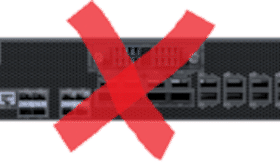It’s not too early to lay the foundations for 6G
Is it too early to start talking about 6G? After all, most mobile operators are still building out and fine-tuning their 5G networks.
“We just put 5G in,” Verizon CTO Kyle Malady said in December 2020, “there’s a lot of development still to come on that one.” Karri Kuoppamaki, T-Mobile vice president of technology development and strategy, shares that view: “Why do we need 6G? I believe 5G has a long and bright future ahead of it.”
And so it does, but that does not mean it’s premature to start work on 6G.
In the case of 5G, the first Non-Standalone (NSA) 5G New Radio (NR) specs were officially approved in December 2017, followed by the Standalone (SA) 5G NR specs in June 2018. Both were the result of an aggressive schedule aimed at meeting global demand for the speeds and services that 5G is designed to enable. It is only a matter of time before that demand will outstrip 5G’s capabilities thanks to advances in other areas, such as video’s evolution from 4K to 8K and the increasing deployments of industrial IoT.
Every new generation of wireless technology is also a fresh opportunity for vendors, operators, device OEMs and even countries to jockey for a first-mover advantage. 6G is no exception. That is why, for example, the Alliance for Telecommunications Industry Solutions (ATIS) whose members include AT&T, T-Mobile and Verizon founded the Next G Alliance in 2020.
Starting now makes you future-ready
Benjamin Franklin famously said: if you fail to prepare, you prepare to fail. So, by starting work now, operators and the wider ecosystem hope to stave off the challenges 4G and 5G posed. To lay the foundations for 6G, we at Enea are focusing our work on four key areas:
Ultra-High-Capacity, High-Frequency, Mesh Networks
The need for speed will be strong with 6G. Higher frequencies support higher throughput, which is why cellular expanded into millimeter wave spectrum for 5G. 6G will aim for terahertz bands, which theoretically can support 1 Terabyte per second (TB/s). It is believed that 6G could be up to five times faster than 5G. 5G is up to 20 Gb/s in the real world. Expect 6G to be more in the range of 95-100 Gb/s.
But of course the nature of radio means that higher frequencies result in limited range and coverage especially indoors. To remedy this and maximize throughput, 6G will likely need to be intelligently combined with 5G and/or Wi-Fi to provide an aggregate connection fast enough for bandwidth-intensive applications. Intelligent traffic management / traffic steering and multipath traffic optimization will play important roles in delivering the experiences that users will expect from 6G. This in turn means Quality of Experience (QoE) will become highly personalized and application dependent.
Privacy – and Redefining the Relationship Between Operators and Hyperscalers
Airbnb, Spotify and Uber are just some of the companies that leveraged 4G to maximum effect and transformed their fortunes. Which companies will 5G transform in the next few years? Well, there is one sure-fire certainty: with faster 6G speeds will come applications that will both gorge and generate data like never before, a true data tsunami.
Prior to the pandemic, IDC estimated that by 2025, 175 zettabytes of data could be generated each year. That’s seismic! Following the lockdowns, the analyst company now estimates that there may be even more data to manage. Given this colossal volume of data, a critical issue facing operators in 6G will be safeguarding privacy and permissions. And as Amazon, Facebook, Google and other hyperscalers develop closer relationships with operators, both camps will need robust data management that is integrated, along with seamless policy and charging. This too will intensify privacy challenges due to data interexchange.
Embedded Connectivity and Massive IoT
5G is designed to support up to 1 million connected devices per 1 square kilometer. 6G will support even higher densities, potentially billions of smartphones, IoT sensors, connected vehicles and other devices. In fact, IPV6 lays the foundation for virtually everything to become addressable.
This complex, heterogenous environment will require sophisticated new tools for smart management of traffic flows, network slices and more to ensure that each device gets the right amount of bandwidth, latency, prioritization and privacy. Many of those devices will support mission-critical enterprise and government applications, with service-level agreements (SLAs) spelling out exactly what those customers need. Again we see enormous pressures on data from such a volume of devices requiring sophisticated data management that scales to billions of devices.
Automated Machine Learning (ML) and Artificial Intelligence (AI) Networks
According to PwC, in 2030 – when 6G could be live – AI could contribute $15.7 trillion to the global economy touching almost every aspect of our lives. Hype? Maybe, but there is little doubt that we are talking significant economic impact here. Needless to say, AI and ML will be critical in strengthening operator networks.
ML will analyze input from devices, the RAN, applications, end users and more to understand every aspect of the network at every moment. The ML analysis will then enable the AI to make the necessary changes in real time — faster than engineering staff could. It could deliver QOE enhancements at the application level and power the heuristics on packet inspection and safeguard networks while identifying threats. Together AL and ML will increasingly enable automated dynamic network re-organization for maximum utilization and personalized user experience.
Looking to the future
With our rich heritage in telecoms, Enea has built a strong track-record in this industry. By starting work on 6G now, our solutions are designed to deliver maximum benefit, particularly in the four areas highlighted above. This in turn places you, the mobile operator, in good stead to maximize new technologies on the horizon.
Over the coming weeks our Enea subject matter experts will publish blogs on each of these areas in more detail. We are also working with the University of Oulu, Finland. They have been developing 6G standards and our teams from Enea will be sharing with them our observations and expertise gathered over the years.


